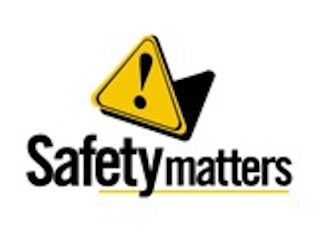Isn’t the machine a hazard as well as the individual hazards on a machine? Last week I blogged about risk assessments, the mitigation process, and how the new methodologies have migrated from qualitative to quantitative approaches. Since designers have engineering tools to design out hazards. Managers need reliable tools to designate an individual hazard level for each machine on their plant floors.

Isn’t the machine a hazard as well as the individual hazards on a machine? Last week I blogged about risk assessments, the mitigation process, and how the new methodologies have migrated from qualitative to quantitative approaches. Great – the designers now have engineering tools to help design out hazards. Of course everyone understands that the mitigated risk level for any hazard never reaches zero. Yet, management still has no reliable tool at their level to designate an individual hazard level for each machine on their plant floor.
Is this an important issue? Let’s take a couple of hypothetical (yet often real) examples using the Category system for hazard levels.
1.) Let’s assume that a risk assessment on a medium size machine has identified 15 hazards. Furthermore, let’s assume that 14 hazards have been mitigated down to Category 2 and that one hazard has been mitigated down to Category 3. If the 14 Cat 2 hazards occur multiple times per shift but the Cat 3 hazard only occurs once per tooling change every three months – would the plant manager consider this “machine” a Cat 2 or a Cat 3 level machine on his plant floor? In either case, what documentation would the plant manager have to substantiate his claim?
2.) Now let’s assume on another machine (with a risk assessment on file) that all hazards have been mitigated to Category 1 levels. Probably a pretty safe machine, right? Furthermore, this machine produces multiple different products with associated tooling changes but once a year it produces a short run of a unique product which is relatively large and heavy. Even so, the hazards on the machine maintain their Cat. 1 level. Yet, an accident happens while stacking the large completed products into shipping containers adjacent to the machine and an employee is severely injured. Would the plant manager consider this “machine” to be a Cat 1 level machine given the severity level of employee injury?
What’s wrong with this picture? Why can’t management have appropriate tools at their level to manage and mitigate hazards? Engineers, EH&S, and maintenance personnel have tools and industry standards to guide them in the execution of their responsibilities.
Management has all the responsibility but no tools in my opinion! What’s yours?
Your comments or suggestion are always welcome so please let us know your thoughts. Submit your ideas, experiences, and challenges on this subject in the comments section below. Click on the following text if you don’t see a comments box, then scroll down: Machine Safety: The missing ah-ha for plant management
Related articles:
Updating Minds About Machine Safety
EN ISO 13849-1, the quantitative approach to machine safety begins with a qualitative process!
How To Integrate Safety
Machine Safety – the myths of safety cultures.
Contact: www.jbtitus.com for “Solutions for Machine Safety.”



